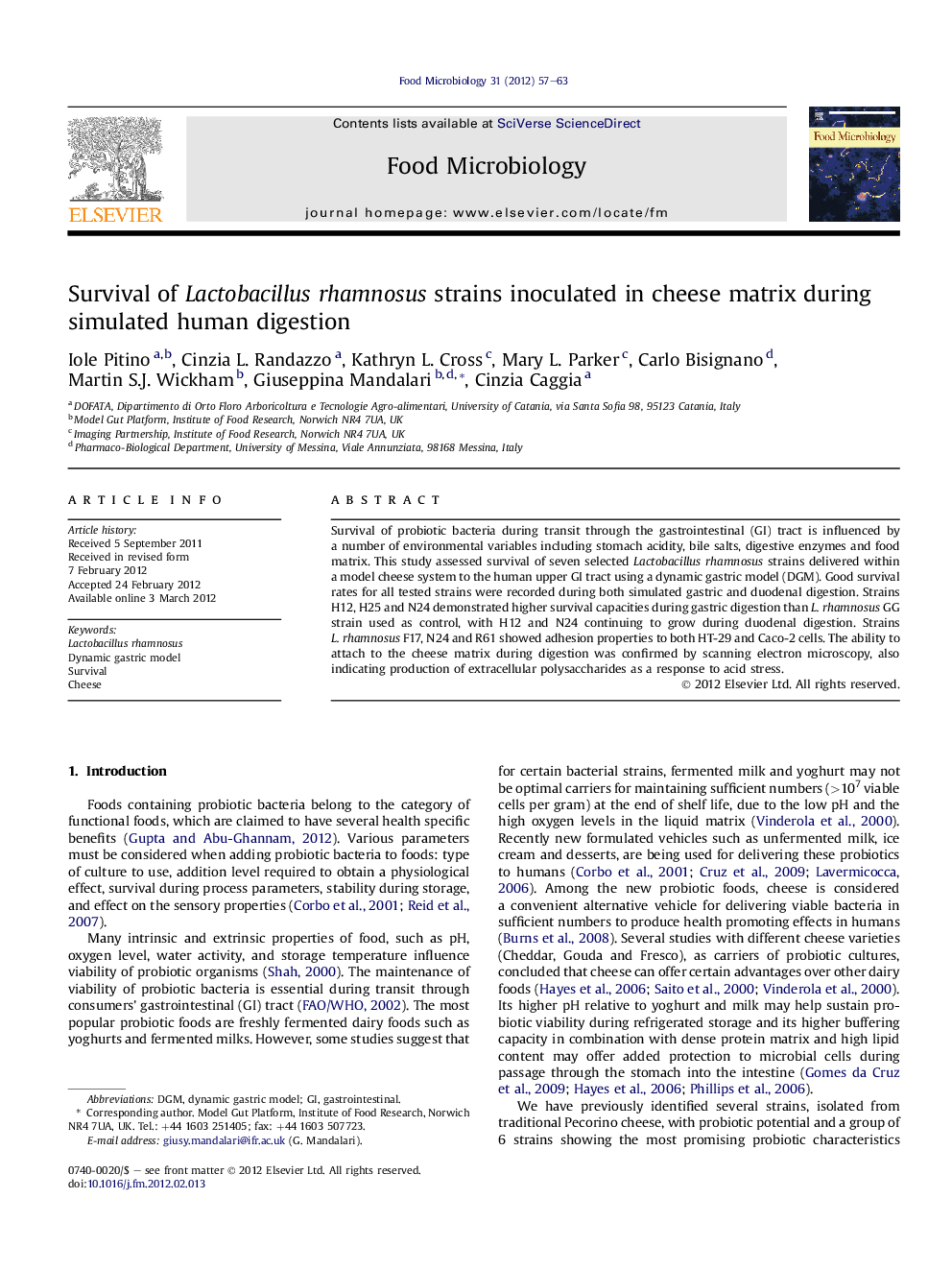| Article ID | Journal | Published Year | Pages | File Type |
|---|---|---|---|---|
| 4363130 | Food Microbiology | 2012 | 7 Pages |
Survival of probiotic bacteria during transit through the gastrointestinal (GI) tract is influenced by a number of environmental variables including stomach acidity, bile salts, digestive enzymes and food matrix. This study assessed survival of seven selected Lactobacillus rhamnosus strains delivered within a model cheese system to the human upper GI tract using a dynamic gastric model (DGM). Good survival rates for all tested strains were recorded during both simulated gastric and duodenal digestion. Strains H12, H25 and N24 demonstrated higher survival capacities during gastric digestion than L. rhamnosus GG strain used as control, with H12 and N24 continuing to grow during duodenal digestion. Strains L. rhamnosus F17, N24 and R61 showed adhesion properties to both HT-29 and Caco-2 cells. The ability to attach to the cheese matrix during digestion was confirmed by scanning electron microscopy, also indicating production of extracellular polysaccharides as a response to acid stress.
► We investigated survival of Lactobacillus rhamnosus strains in the GI tract. ► Cheese was used as delivery vehicle. ► A dynamic gastric model was used to assess survival. ► Adhesion properties were shown to HT-29 and Caco-2 cells. ► Scanning electron microscopy indicated extracellular polysaccharides production.
